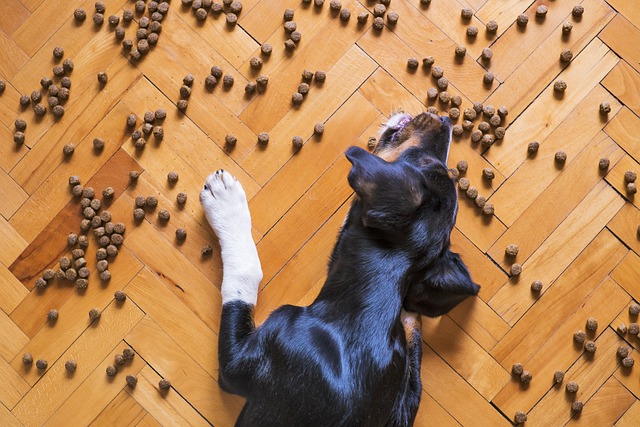What Molds Are Dangerous for My Dog?
There are hundreds of thousands of mold species out there, and not all of them are toxic and can cause harm. But it takes time and tests to determine if the mold in your home is toxic, and if its levels are dangerous. Simply, if you can see mold you know it is a bad sign.
The most common types of fungus in homes are Aspergillus, Cladosporium, and Stachybotrys (black mold). All of these can cause allergic reactions and health problems in humans and pets. If left untreated, molds can cause serious health problems.
Symptoms of Mold Exposure or Allergies in Dogs
The causes of symptoms of mold poisoning or exposure in dogs can be put into three categories:
Let’s talk about each of these and how they can affect your dog’s health and what to watch out for.

Mold spores are all around us – both outdoors and indoors. The types and amount of spores in a given place determines the potential health risk. The amount of airborne mold outdoors varies by season and conditions. People and animals are typically accustomed to the mold types and levels outdoors.
Airborne mold conditions in indoor spaces should be at or below the average amounts observed in the nearby outdoors. Over time, because of moisture, most indoor spaces develop what we call “mold factories,” where mold growth takes place.
Mold factories are typically present in areas where moisture is or was present – i.e. window sills, sinks, bathrooms, toilets, etc. When mold is growing indoors, it’s common for mold to release harmful spores and mycotoxins into the indoor environment.
When unhealthy levels and/or types of mold spores are inhaled by dogs, they can cause a number of health problems, including symptoms like:
Typically, these symptoms can be successfully treated, but they’ll likely return if the problem environment isn’t corrected. You can prevent your dog from inhaling unhealthy levels of mold spores by controlling the air quality in your home. If you have any moisture problems, you need to resolve them quickly. The EPA suggests having moisture levels in your home between 30-50%. Remember, moisture control is mold control.
It’s no secret that dogs love to eat or chew on whatever they can find. Sometimes you just can’t react fast enough to take something away from them. In most cases, dogs will be fine, but what if they have eaten something moldy? If dogs get into trash or eat something in the park, they might get poisoned, so keep an eye on your pet.
The regular dog food you have used for years without issues might develop black mold growth. Moist, dry, and home-cooked types of food are all susceptible to mold growth. Consider grain-free dry dog food. Recent studies showed that it is less likely to develop mold or contain mycotoxins.
Grain-free Dry Dog Food
Whether you have an impatient puppy or a swimmer, don’t let water get into his food or bed.
Moldy refrigerator food and compost piles, if easily accessible to your dog, can be a way of getting mold toxins.
Symptoms of mold poisoning in dogs through ingestion can include:

There are a couple of things you can do to prevent your dog from eating moldy foods:
Most of the time, you can detect a dog allergy if it manifests on the skin. Mold allergy might irritate your dog year-round, unlike the seasonal pollen allergies.
The symptoms of black mold allergy might come and go, depending on the air humidity outside and inside. According to the Whole Dog Journal, these mold allergies are most likely develop in dogs between the ages of 6 months and 3 years. Although it is true in most cases, dogs of different ages can suffer from it.

Most often, black mold allergy symptoms will show on dog’s skin, so look out for:
All dogs love a good scratch, but if you notice your dog rubbing or scratching more than normal against furniture or other objects – it is time to check their skin for irritation or allergies.
Professional tip: check your dog’s bed. If it is often wet, then mold can develop inside of it. To easily prevent that from happening, purchase a water-resistant dog bed.
Water-Resistant Dog Bed
Whether you have an impatient puppy or a swimmer, don’t let the water from him get into his bed.
How Can Mold Affect Dogs?Dogs are affected by mold in similar ways to humans. In fact, dogs have a

6 Things You Didn’t Realize Are Killing Your Dog
Pythiosis (otherwise known as water mold infection) is a rare fungal infection that can affect the skin or the gastrointestinal tract, causing sores and weight loss. It is caused by the aquatic mold Pythium insidiosum. Pythiosis can strike not only dogs, but many other animals as well, including cats, horses, and even humans. The infection is generally contracted when animals with open sores drink, stand, or swim in stagnant contaminated water. This serious condition has a poor prognosis, but with treatment, many dogs survive.

